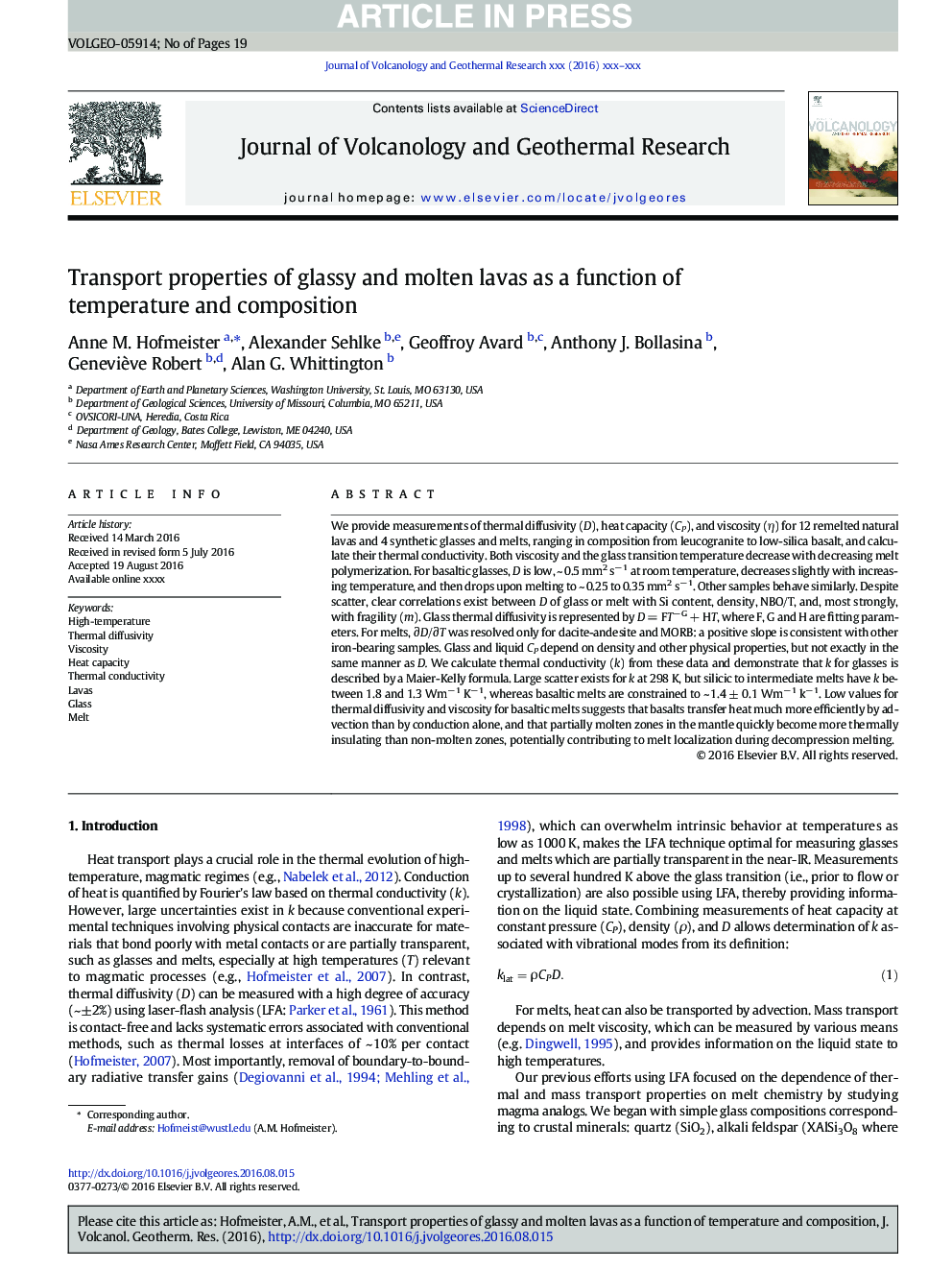| کد مقاله | کد نشریه | سال انتشار | مقاله انگلیسی | نسخه تمام متن |
|---|---|---|---|---|
| 5783779 | 1638295 | 2016 | 19 صفحه PDF | دانلود رایگان |
عنوان انگلیسی مقاله ISI
Transport properties of glassy and molten lavas as a function of temperature and composition
ترجمه فارسی عنوان
خواص حمل و نقل گدازه های شیشه ای و گلی به عنوان تابعی از درجه حرارت و ترکیب
دانلود مقاله + سفارش ترجمه
دانلود مقاله ISI انگلیسی
رایگان برای ایرانیان
کلمات کلیدی
درجه حرارت بالا، نفوذ پذیری حرارتی، ویسکوزیته، ظرفیت گرمایی، هدایت حرارتی، لاوا، شیشه، ذوب شدن،
موضوعات مرتبط
مهندسی و علوم پایه
علوم زمین و سیارات
ژئوشیمی و پترولوژی
چکیده انگلیسی
We provide measurements of thermal diffusivity (D), heat capacity (CP), and viscosity (η) for 12 remelted natural lavas and 4 synthetic glasses and melts, ranging in composition from leucogranite to low-silica basalt, and calculate their thermal conductivity. Both viscosity and the glass transition temperature decrease with decreasing melt polymerization. For basaltic glasses, D is low, ~ 0.5 mm2 sâ 1 at room temperature, decreases slightly with increasing temperature, and then drops upon melting to ~ 0.25 to 0.35 mm2 sâ 1. Other samples behave similarly. Despite scatter, clear correlations exist between D of glass or melt with Si content, density, NBO/T, and, most strongly, with fragility (m). Glass thermal diffusivity is represented by D = FTâ G + HT, where F, G and H are fitting parameters. For melts, â D/â T was resolved only for dacite-andesite and MORB: a positive slope is consistent with other iron-bearing samples. Glass and liquid CP depend on density and other physical properties, but not exactly in the same manner as D. We calculate thermal conductivity (k) from these data and demonstrate that k for glasses is described by a Maier-Kelly formula. Large scatter exists for k at 298 K, but silicic to intermediate melts have k between 1.8 and 1.3 Wmâ 1 Kâ 1, whereas basaltic melts are constrained to ~ 1.4 ± 0.1 Wmâ 1 kâ 1. Low values for thermal diffusivity and viscosity for basaltic melts suggests that basalts transfer heat much more efficiently by advection than by conduction alone, and that partially molten zones in the mantle quickly become more thermally insulating than non-molten zones, potentially contributing to melt localization during decompression melting.
ناشر
Database: Elsevier - ScienceDirect (ساینس دایرکت)
Journal: Journal of Volcanology and Geothermal Research - Volume 327, 15 November 2016, Pages 330-348
Journal: Journal of Volcanology and Geothermal Research - Volume 327, 15 November 2016, Pages 330-348
نویسندگان
Anne M. Hofmeister, Alexander Sehlke, Geoffroy Avard, Anthony J. Bollasina, Geneviève Robert, Alan G. Whittington,
